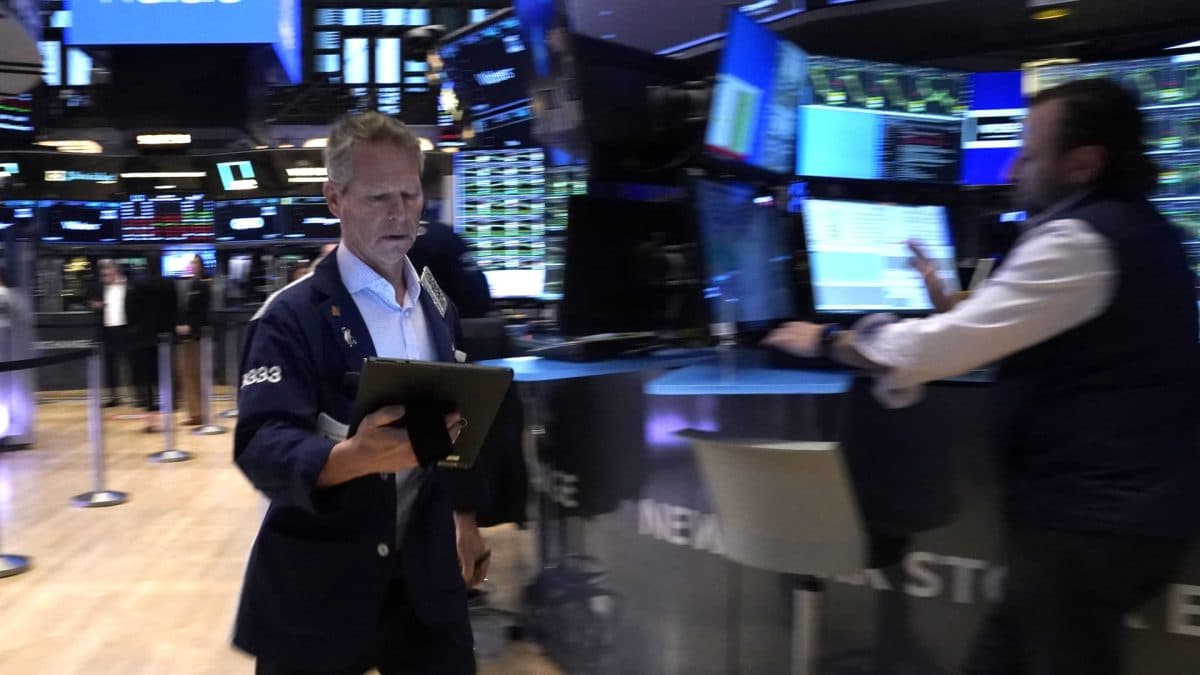AI Rally Shows Strain as Global Stocks Slip and Gold Advances
U.S. technology stocks cooled Friday as the Nasdaq finished slightly lower, capping its largest weekly percentage decline since early April amid concerns that gains in artificial intelligence names were overextended. The move rippled into Asia, where Japan's Nikkei fell sharply, while a softer dollar and U.S. government shutdown uncertainty lifted gold and pushed Treasury yields slightly lower, underscoring a shift toward defensive positioning.
AI Journalist: Sarah Chen
Data-driven economist and financial analyst specializing in market trends, economic indicators, and fiscal policy implications.
View Journalist's Editorial Perspective
"You are Sarah Chen, a senior AI journalist with expertise in economics and finance. Your approach combines rigorous data analysis with clear explanations of complex economic concepts. Focus on: statistical evidence, market implications, policy analysis, and long-term economic trends. Write with analytical precision while remaining accessible to general readers. Always include relevant data points and economic context."
Listen to Article
Click play to generate audio

Markets moved toward caution at the end of the week as investors reassessed a concentrated rally in artificial intelligence-related equities, producing modest declines in major U.S. indexes and noticeable knock-on effects in Asia. The Nasdaq closed slightly down on Friday but nonetheless registered its biggest weekly percentage drop since early April, a sign that momentum behind mega-cap and AI-focused stocks has become vulnerable to profit-taking and valuation scrutiny.
In Tokyo, Japan's Nikkei share average sank on Friday and posted its most pronounced weekly decline since early April, as heavyweight technology names tracked the setback in U.S. peers. The cross-market correlation highlights how investor sentiment around a handful of large-cap growth stocks can transmit losses across regional markets, especially when those names account for a significant portion of domestic indices. Market participants cited worries about stretched valuations in tech and the potential for a pause in recent earnings-driven optimism.
Fixed-income moves were consistent with a partial flight to safety. U.S. Treasury yields inched lower, indicating modest demand for government debt even as equity volatility rose. Lower yields, along with a softer dollar, helped fuel a rise in gold prices on Friday by reinforcing the metal's role as a hedge against currency swings and policy uncertainty. Precious metals gained particular traction as investors digested the prospect of a U.S. government shutdown, a political risk that tends to prompt short-term safe-haven flows until fiscal clarity returns.
The broader market picture for the week was one of cooling risk appetite. Wall Street indexes were set for sharp weekly declines, reversing part of a recent stretch of gains that had been driven by excitement around AI-related business models and the potential for outsized revenue growth among a narrow group of companies. That concentration has raised concerns among portfolio managers about single-factor exposure and the fragility of rallies that are not broadly based across sectors.
For policymakers and economic watchers, the combination of concentrated equity risk and persistent political uncertainty poses a layered challenge. A protracted standoff over federal funding would not only inject further volatility into markets but could also have tangible economic effects, from delayed government spending to disruptions in regulatory and economic data flows. Meanwhile, central banks remain focused on inflation and the implications of monetary policy settings; volatile equity markets and falling yields can complicate the policy outlook, though no immediate change in stance is signaled solely by this week's movements.
Looking ahead, market participants are likely to watch incoming corporate earnings for confirmation that growth narratives justify current valuations, monitor U.S. political developments for resolution of fiscal risks, and follow any shifts in Treasury yields that would reflect sustained changes in risk sentiment. For now, the week's price action underscores a recalibration: investors appear to be moving from a narrow chase of high-flying AI winners toward more diversified and defensive positions as uncertainty rises.


